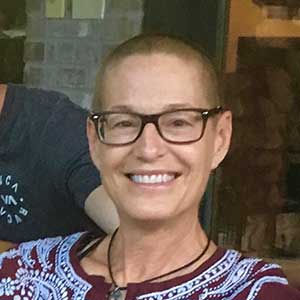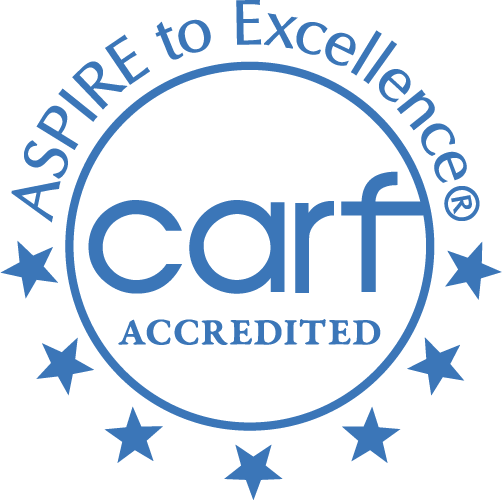Skip To Rehab Listing
With addiction treatment easily available, those struggling with addiction can find assistance within their local area.
Addiction Recovery Facility Settings and Recovery Methods In Antrim
The settings of recovery facilities in Antrim may include the following: inpatient addiction treatment facilities, short term addiction treatment programs, outpatient individual counseling, long term addiction treatment programs, detox centers.
People seeking rehab can find conveniently located programs near them with a range of recovery methods designed for successful recovery. These techniques, which include both traditional and recently developed approaches, include the following: vocational rehabilitation services, 12-step facilitation approach, trauma-related counseling, substance abuse counseling approach, cognitive/behavior therapy, rational emotive behavioral therapy.
Programs Addressing Special Requirements for Alcohol and Drug Treatment
Drug and alcohol addiction can vary based off of factors, such as the type of drug driving the addiction. Many rehabilitation programs in the Antrim region deliver facilities purposed to tailor rehab to a patient's specific needs. These programs are comprised of the following: transgender or (LGBT) clients, persons with serious mental illness, self-help groups, programs for the hearing impaired, treatment for spanish-speaking clients, residential beds for client's children.
Clients who are unsure what their requirements are can get in touch with these rehabs to get client services that can guide them toward the proper program.
Paying For Treatment - Payment Options & Alternatives
People struggling with alcohol and drug abuse come from differing financial conditions, but a range of funding options makes rehabilitation economically accessible for anybody. Financing alternatives include the following: private pay, private medical insurance, military insurance, sliding fee scale, state welfare or child and family services funds, county or local government funds.
Individuals searching for rehabilitation can get in touch with a treatment program to learn more about what financing opportunities are available to them.
Antrim, NH.'s alcohol and drug facilities, programs, and payment options provide people who are struggling with alcohol and drug dependency an opportunity to start a sustainable sobriety plan.
Commonly Asked Questions about Addiction and Treatment
Does Medicaid pay for a person to go to a drug rehab?
Yes, Medicaid, the U.S. government's health insurance program for individuals with low income, does cover substance use disorder services, including drug rehabilitation. However, the specific services covered and the extent of coverage can vary from state to state, as Medicaid is a joint federal and state program.
Commonly, Medicaid coverage can include services such as:
Screening and assessment: This helps to determine the level of addiction and the most suitable treatment plan.
Outpatient counseling: This can include individual therapy, group therapy, and family therapy.
Inpatient care: This includes residential treatment programs where individuals receive intensive care, usually for severe addictions.
Medication-assisted treatment: Medications can be used to help manage withdrawal symptoms, reduce cravings, and treat any co-occurring mental health conditions.
Follow-up care and long-term maintenance: This could include case management services, peer supports, and other recovery services.
It's important to note that while Medicaid does cover drug rehabilitation services, there might be certain eligibility criteria to meet or pre-authorization requirements. Furthermore, not all treatment centers accept Medicaid, so it's crucial to check with the specific facility about their payment options.
For the most accurate information, individuals should contact their state's Medicaid office or visit the official Medicaid website.
What is a medical detox?
Medical detox, also known as medically supervised detoxification, is the process of safely managing the physical symptoms of withdrawal from substances like alcohol, opioids, or other drugs under the supervision of healthcare professionals. This process is typically the first step in a comprehensive treatment plan for substance use disorders.
The goal of medical detox is to minimize the physical harm caused by withdrawal and to alleviate discomfort. Here's what it typically involves:
Evaluation: This first step includes a thorough assessment of the individual's physical and mental health, as well as the extent and nature of their substance use. This information is used to design an appropriate and personalized detox and treatment plan.
Stabilization: During this phase, medical professionals administer treatment to manage withdrawal symptoms and ensure the patient's safety. This may involve the use of medications to ease symptoms and prevent complications. Medical staff monitor the patient's vital signs like heart rate, blood pressure, and temperature, and may provide nutritional support and hydration as needed.
Preparation for Further Treatment: Once the acute phase of detox is complete, the focus shifts to preparing the individual for further treatment, such as inpatient or outpatient rehab. This may involve counseling or therapy to help the individual understand the importance of continuing treatment to maintain long-term recovery.
What is the 12 step method for treating addiction?
"The 12-step method for treating addiction is a structured, peer-based approach that originated with Alcoholics Anonymous (AA) in the 1930s. Since then, it has been adapted for various other substance use disorders and behavioral addictions, including Narcotics Anonymous (NA), Gamblers Anonymous (GA), and Overeaters Anonymous (OA), among others. The method is based on a set of guiding principles, known as the 12 steps, that outline a path to recovery, personal growth, and spiritual development.
The 12 steps of the method are as follows:
- Admitting powerlessness over the addiction and recognizing that one's life has become unmanageable.
- Believing that a higher power (interpreted by each individual according to their beliefs) can restore sanity and provide support in recovery.
- Deciding to turn one's will and life over to the care of the higher power.
- Conducting a thorough and honest moral inventory of oneself.
- Admitting to oneself, the higher power, and another person the exact nature of one's wrongs and shortcomings.
- Being ready to have the higher power remove these defects of character.
- Humbly asking the higher power to remove one's shortcomings.
- Making a list of all the people harmed by one's addiction and being willing to make amends to them.
- Making direct amends to those harmed, whenever possible, except when doing so would cause harm to them or others.
- Continuing to take personal inventory and promptly admitting when one is wrong.
- Seeking to improve one's conscious contact with the higher power through prayer and meditation, asking for knowledge of the higher power's will and the strength to carry it out.
- Having experienced a spiritual awakening as a result of these steps, carrying the message to others struggling with addiction and practicing these principles in all aspects of life.
The 12-step method emphasizes the importance of peer support, mutual aid, and the sharing of personal experiences as a means of overcoming addiction. Participants typically attend regular meetings, where they share their stories, listen to others, and work through the steps at their own pace. Many 12-step programs also encourage members to find a sponsor, an experienced member who has worked through the steps and can provide guidance, support, and accountability during the recovery process."













